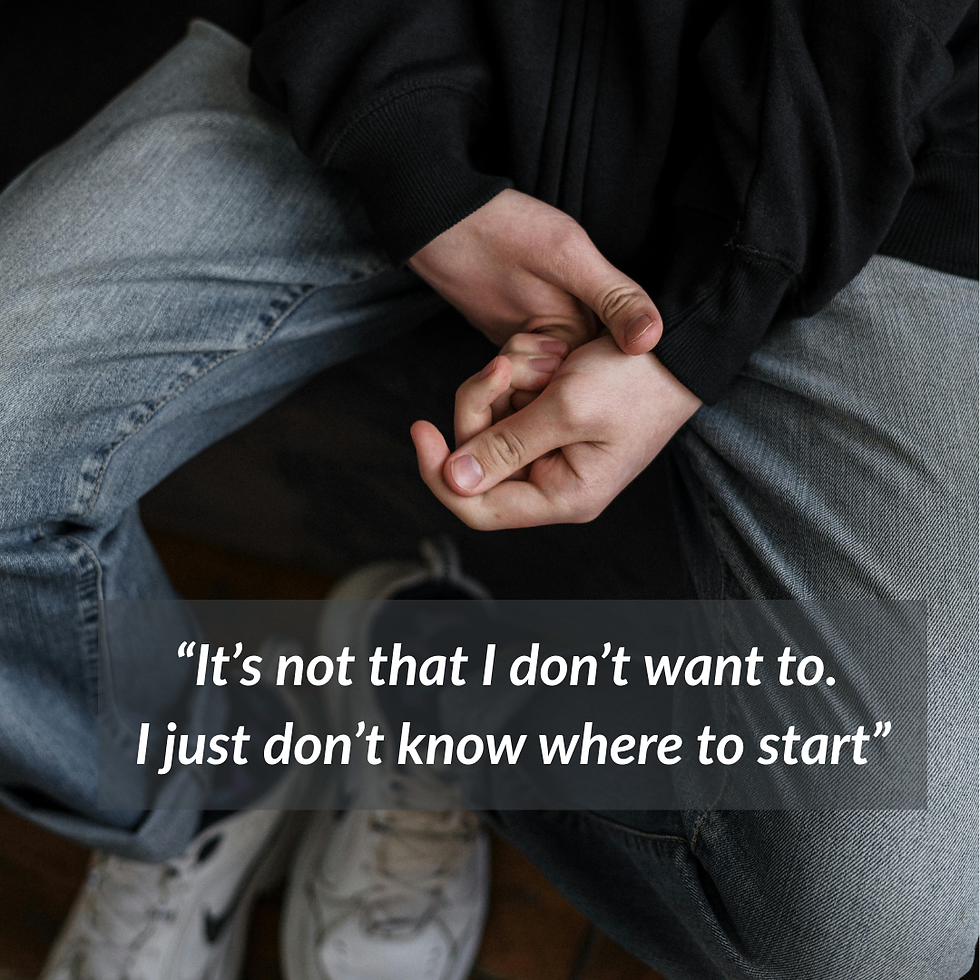Why Everyday Tasks Can Feel Harder: Understanding Executive Function in Autism and ADHD
- Dr Sarah Cunningham

- Oct 22
- 4 min read
Updated: Oct 24

If you’ve ever watched your child struggle to start their homework, lose track of what they were meant to be doing, or melt down when plans suddenly change, you’re not alone.
Many families we work with describe their child as bright and capable, yet easily overwhelmed by the “getting started”, “keeping going” or “switching gears” parts of daily life. These challenges often have less to do with motivation and more to do with something called executive functioning — the brain’s system for managing thinking, emotions, and behaviour.
What Is Executive Function?
Executive function (EF) refers to a set of mental skills that help us plan, organise, remember and regulate ourselves in order to achieve goals. It’s sometimes called the brain’s management system (the part that helps turn intentions into actions.)
It can be helpful to think of it as a bit like an air traffic controller, guiding lots of mental “flights” (including attention, memory, planning, emotions) to take off, land, and change direction safely. When the control tower is calm and connections are clear, everything runs smoothly. But when there are lots of planes in the sky at once, or when communication between the tower and pilots is slower,
it takes much more effort to keep everything coordinated.
For some autistic people and people with ADHD, the networks that support these “control tower” processes work differently. The tower is still doing its job, it just
has to manage more signals, more noise, and more potential for overlap. That extra work explains why everyday things like getting started, switching tasks, or staying organised can feel so draining.
A Relative Weakness, Not a Deficit
Every brain has strengths and weaknesses. For many neurodivergent children, executive functions are simply less automatic compared to other areas of ability, such as reasoning, creativity, or long-term memory.
This can look like:
Struggling to get started even when they know what to do
Forgetting steps in a familiar routine
Finding transitions difficult especially when absorbed in a task
Feeling “stuck” or overwhelmed when plans change
Taking longer to recover from distractions
These are signs of cognitive load, not laziness. The effort required to plan, switch attention, or self-regulate is genuinely higher for some brains than others.
Understanding this difference helps shift the focus from frustration (“Why won’t they just do it?”) to curiosity (“What support helps this brain work best?”).
Why Task Switching Can Feel So Hard
Task switching, when we move smoothly from one activity to another, is one of the most demanding EF skills. For children with autism or ADHD, this can be challenging because the brain’s “gear change” mechanism (involving the prefrontal cortex and dopamine pathways) doesn’t shift easily between tasks of differing interest or structure.
A sudden change in focus can feel like being pulled out of deep water. It can be experienced as disorienting, noisy, and effortful. That’s why transitions often trigger frustration, shutdown, or fatigue. This isn’t a behavioural problem, although it might feel it in the moment, it’s a signal that cognitive recovery time is needed.

How You Can Help
Support for executive functioning starts with empathy and structure, not adding pressure. Some practical approaches that can make a difference include:
1. Create predictability: Use visual schedules, countdowns, or verbal signposts to prepare for transitions (“In five minutes, we’ll pause and get ready for dinner”). Predictability reduces anxiety and helps the brain shift gears more smoothly.
2. Externalise the plan: Keep information visible. Use lists, calendars or checklists so your child doesn’t need to hold everything in their working memory.
3. Build interest and meaning: Motivation networks in autism and ADHD often respond more strongly to interest than obligation. Try linking tasks to something meaningful (“Once we’ve finished this, we can…”).
4. Allow recovery time: Switching from one task to another takes mental energy. Where possible, give space for decompression time between activities.
5. Model self-compassion: Let your child see that everyone’s brain has limits. When you narrate your own coping (“I find it hard to stop working too, sometimes I take a few deep breaths or get up and stretch before trying to do something else”) you’re teaching emotional regulation through example.
A Compassionate Perspective
Recognising executive function differences doesn’t mean lowering expectations. Instead it means understanding the effort behind the effort. Considering the reasons why some things seem trickier. When we view these challenges as neurological, rather than behavioural, we create space for children to succeed on their own terms.
At Insight, we believe that understanding how a child’s brain works is the foundation for meaningful support.
If this sounds familiar for your child, it’s something we can explore in more detail during an assessment at Insight.
Unlike many services, we take time to explain our assessment findings and make recommendations that are specific to you and the things that matter most to your family. We can also offer post-assessment support, whether or not a diagnosis is given, to help translate understanding into everyday strategies that work.

